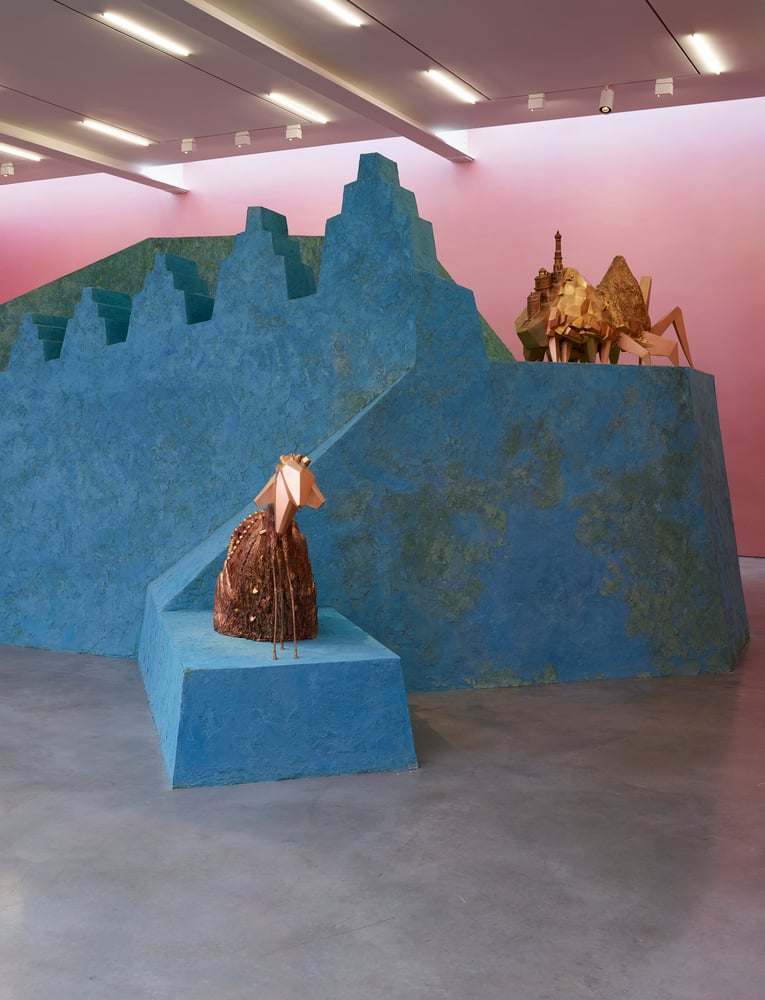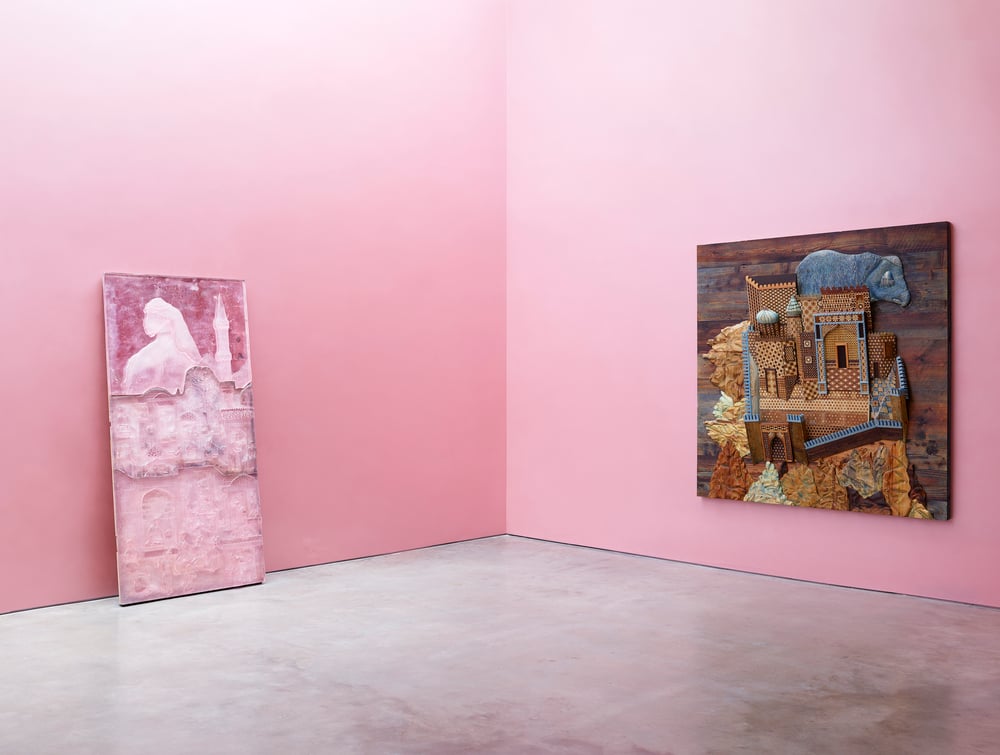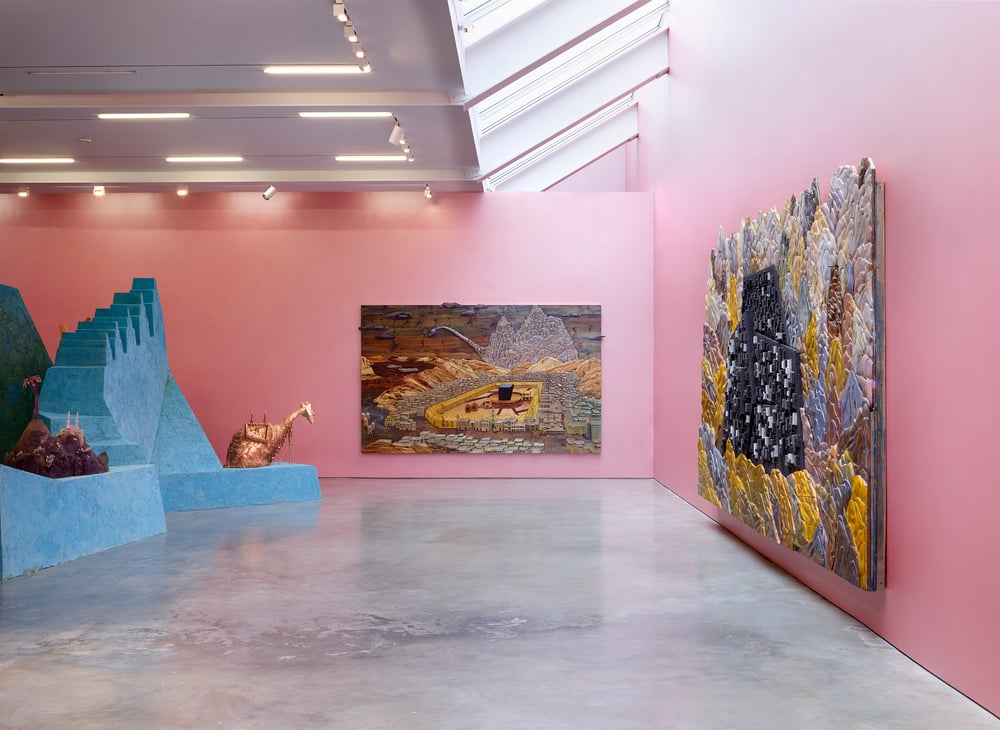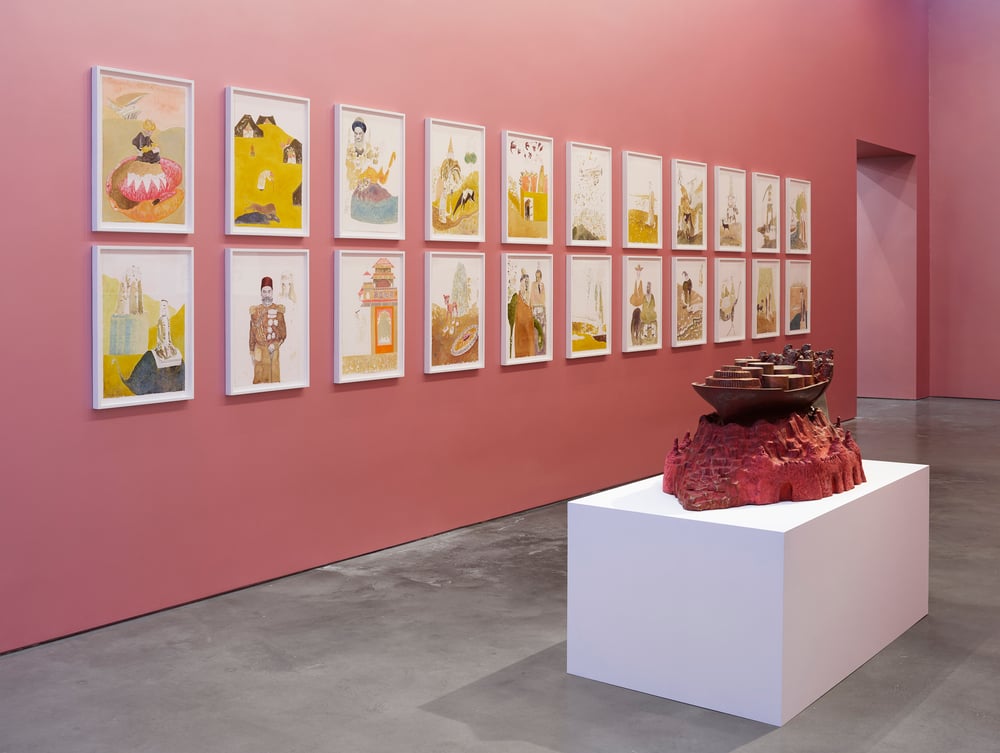On View
‘I’m Questioning How Much I Believe in It’: Artist Wael Shawky on His Fantastical Remapping of Arab History
The artist playfully thumbs at the boundaries between history and storytelling.

The artist playfully thumbs at the boundaries between history and storytelling.

Katie White

Maps are the age-old tool that help us humans orient ourselves, allowing us to conceptualize the world’s terrain and land masses all the way down to our own neighborhood blocks. And, as our everyday reliance on GPS today would indicate, people trust maps.
But for Alexandria-born artist Wael Shawky, maps are better thought of as imaginary spaces—where mountains are flattened, lands are stretched and shrunk, rushing waterways marked as steady lines. All historical documents are, in his view, a mode of storytelling, and the narrators are not always so reliable.

Installation view of “Wael Shawky: The Gulf Project Camp,” 2019. Courtesy of Lisson Gallery.
In “The Gulf Project Camp,” Shawky’s debut exhibition at Lisson Gallery in New York, and his first show in the city since MoMA PS1’s “Cabaret Crusades” in 2015, the artist is immersing visitors in a theatrical sculptural environment that melds together antiquated European maps of the Middle East, Shawky’s own drawings, and scenes and figures from the history and lore of the Arabian Peninsula.
A mountain-like crenelated, turquoise wall installation dominates the gallery, which also serves as a stage for a few of the artist’s new bronze sculptures—themselves whimsical amalgamations of animals and terrains of the region. Elsewhere are intricate wood relief carvings dated between 400 and 2000 years old, ice-like cast glass sculptures produced in Venice, and, in a smaller back room, several dozen of Shawky’s new ink and oil drawings

Installation view of “Wael Shawky: The Gulf Project Camp,” 2019. Courtesy of Lisson Gallery.
Throughout the exhibition, Shawky playfully thumbs at the boundaries between history and storytelling. This ethos is captured nicely in a wood-carving entitled The Gulf Project Camp: Carved wood (after ‘Hajj (Panoramic Overview of Mecca)’ by Andreas Magnus Hunglinger, 1803. The work depicts a 17th-century map of Mecca drawn by a European cartographer—an incongruous continental European mountain range fills the background. To his own version Shawky has added a creature that’s part camel, part rock formation, which sits monumentally in the background, unpinning any lingering associations with a factual reality.
Curious and playful absurdities abound. Shawky has been researching and developing many of the ideas explored in the show for a forthcoming new film series titled The Gulf Project, which will focus on the Arab Peninsula from the 17th century to the present day, and the transformation of the urbanism and ruling families in Gulf societies. Perhaps the films will draw history in harder lines, but here at least it is presented as a plaything, acting out in costumes and colors, or like an illustrated storybook that’s waiting for its newest retelling

Installation view of “Wael Shawky: The Gulf Project Camp,” 2019. Courtesy of Lisson Gallery.
To see the exhibition and hear Shawky’s commentary, click the video below.
“Wael Shawky: The Gulf Project Camp” is on view at Lisson Gallery through October 16, 2019.